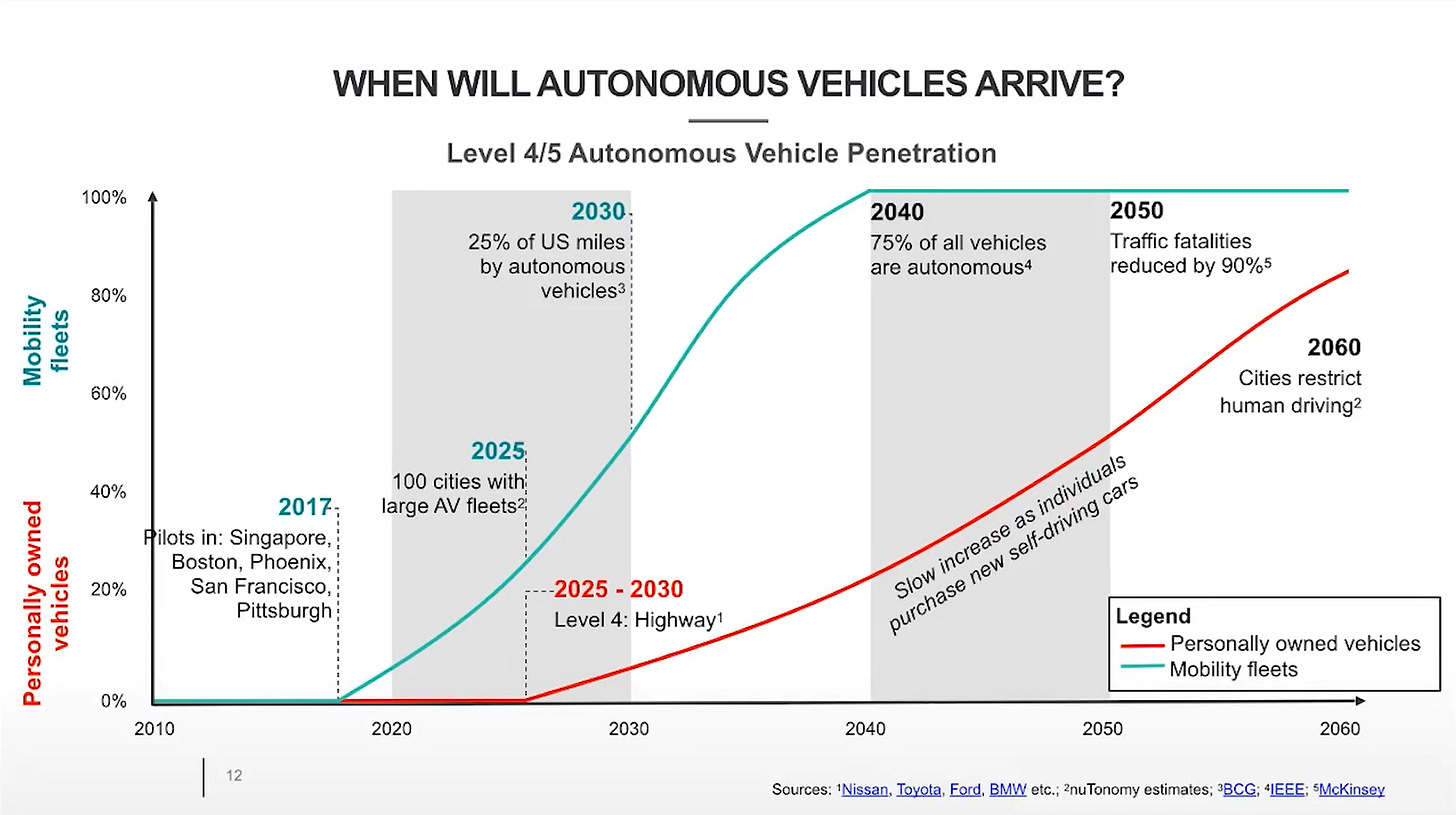Robotaxi Data Moats, Real or Fiction?
In the futuristic world of autonomous vehicles (AVs), the idea of data moats — large reserves of exclusive data that offer a competitive advantage — is being challenged in the face of commercial realities. Tesla, for instance, has carved its own path, utilizing the extensive data gathered from its fleet, equipped with cost-effective sensors, to enhance its Full Self-Driving (FSD) capabilities, which is still far from reality. On the other hand, companies like Waymo, Cruise, and Zoox have invested billions of dollars in developing comprehensive full-stack solutions to utilize data from high-quality, albeit costly, sensors for competitive advantage, who are all nothing but elaborate demos and nowhere close to being money-making businesses.
Having data within an organization’s confines doesn’t seem to be sufficient anymore, as these companies struggle with moving beyond dependence on human drivers or small-scale operations. Let’s examine the contrasting data strategies of two industry leaders.
Tesla’s struggle to move beyond driver assistance
Tesla’s approach to autonomous driving hinges on the collection and analysis of massive amounts of data from its vehicles. The company’s recent release of the FSD Beta v12 update underscores its reliance on an “end-to-end neural net” approach, which is trained on millions of video clips collected from Tesla vehicles in diverse driving conditions. This method represents a departure from relying on explicit programming towards a model that learns directly from real-world driving data. Tesla allows owners to opt-in to share their vehicle data, including Autopilot analytics and improvements, which is crucial for refining its self-driving algorithms.
However, Tesla’s approach to fleet data utilization in the development of its autonomous vehicle technology illustrates that the promise of data moats in the AV industry is more nuanced than previously thought. As the AV landscape continues to evolve, Tesla’s strategy highlights the importance of strategic data utilization over mere accumulation, signaling a shift towards a more dynamic and innovative approach to achieving autonomy in the automotive industry.
Waymo’s struggle to move beyond small-scale operations
Waymo, Alphabet’s autonomous vehicle subsidiary, has been a pioneer in the development of self-driving technology. Despite its early start and significant technological advancements, Waymo has faced challenges in scaling its operations to a commercially successful business. Unlike Tesla, which has leveraged data from its fleet to improve its Full Self-Driving (FSD) capabilities, Waymo’s path to commercialization has been more cautious and incremental. Waymo has made strides in offering autonomous ride-hailing services, such as its Waymo One service in Phoenix and its expansion to San Francisco and Los Angeles. However, the company has encountered obstacles in moving beyond these small-scale operations. One of the key challenges has been the high costs associated with the technology, specifically the expensive lidar sensors used in their vehicles.
Waymo has accumulated vast amounts of data through its extensive testing on public roads and in simulations. However, the company’s cautious approach to expansion suggests that it recognizes the complexity of deploying AVs in diverse and unpredictable real-world environments. Waymo’s challenges highlight that having a large quantity of data is not sufficient on its own; the data must be of high quality and used effectively to improve the technology
Conclusion
In conclusion, while the volume of data is important for getting started with AV development, it is not enough. Transparent and scalable ways of using data are needed to test technology, gain regulatory and public trust, and ultimately ensure the safety and effectiveness of AVs.
This is a post about the present and future of self-driving technology. We are building safety solutions for the self-driving industry and will share more details soon.


